Generative Adversarial Networks (GAN) is a framework for estimating generative models via an adversarial process by training two models simultaneously. A generative model G that captures the data distribution, and a discriminative model D that estimates the probability that a sample came from the training data rather than G. It was proposed and presented in Advances in Neural Information Processing Systems (NIPS) 2014.
Introduction
- Taxonomy of Machine Learning

- Supervised learning: The discriminative model learns how to classify input to its class.
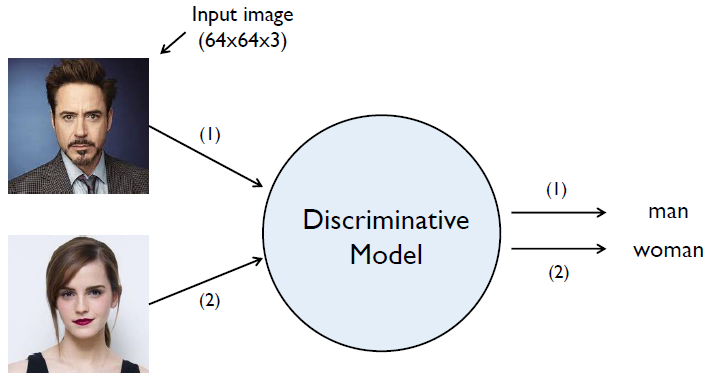
- Unsupervised learning: The generative model learns the distribution of training data.

- More challenging than supervised learning because there is no label or curriculum which leads self learning
- NN solutions: Boltzmann machine, Auto-encoder, Variation Inference, GAN
- Supervised learning: The discriminative model learns how to classify input to its class.
- The goal of the generative model is to find a \(p_{model}(x)\) that approximates \(p_{data}(x)\) well.

Generative Adversarial Nets (GAN)
Intuition of GAN
- The discriminator D should classify a real image as real (\(D(x)\) close to 1) and a fake image as fake (\(D(G(z))\) close to 0).
- The generator G should create an image that is indistinguishable from real to deceive the discriminator (\(D(G(z))\) close to 1).
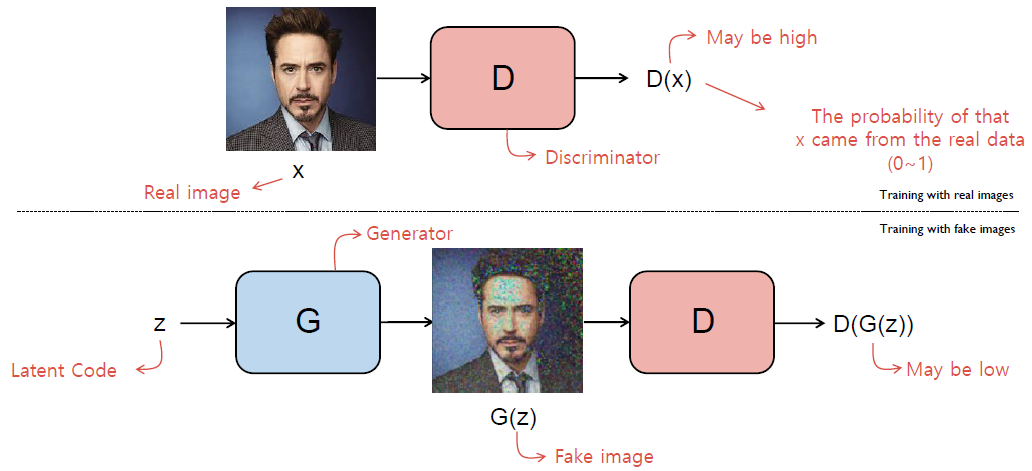
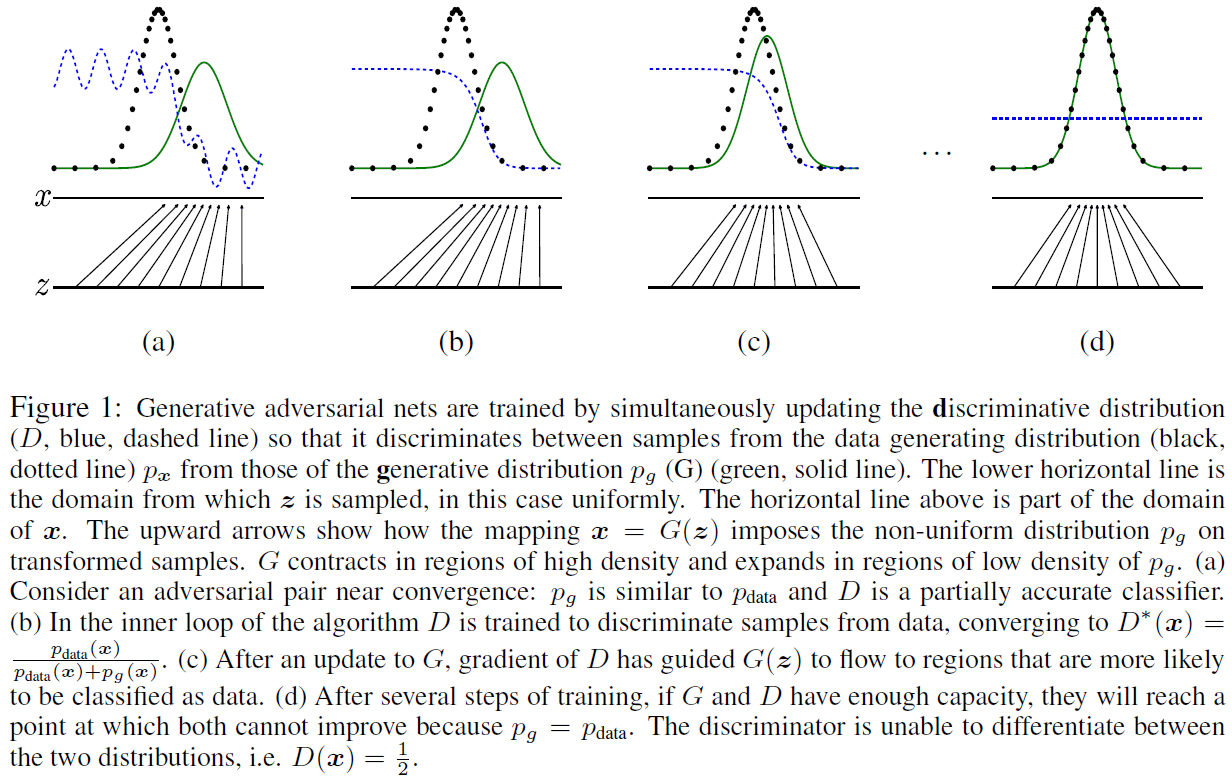
Objective Function
- Objective function of GAN is minimax game of two-player G and D.
- For the discriminator D should maximize \(V(D,G)\)
- Sample \(x\) from real data distribution for \(p_{data}(x)\)
- Sample latent code \(z\) from Gaussian distribution for \(p_z(z)\)
- \(V(D,G)\) is maximum when \(D(x)=1\) and \(D(G(z))=0\)
- For the generator G should minimize \(V(D,G)\)
- G is independent of \(\mathbb{E}_{x\sim p_{data}~(x)}[log D(x)]\)
- \(V(D,G)\) is minimum when \(D(G(z))=1\)
- Saturating problem
- In practice, early in learning, when G is poor, D can reject samples with high confidence because they are clearly different from the training data.
- In this case, the gradient is relatively small at \(D(G(z))=0\) which makes \(\log (1-D(G(z)))\) saturates.

- Rather than training G to minimize \(\log (1-D(G(z)))\), we can train G to maximize \(\log D(G(z))\).
- This objective function results in the same fixed point of the dynamics of G and D but provides much stronger gradients early in learning.
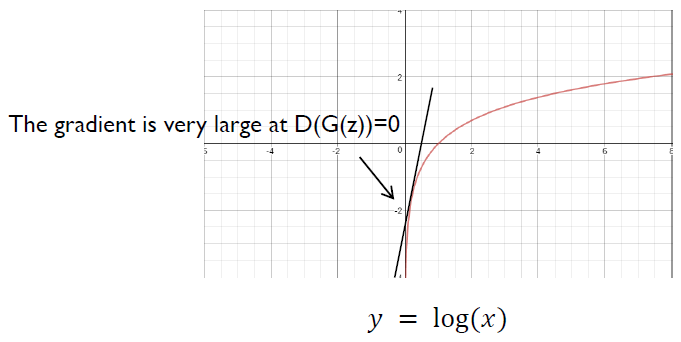
- Why does GANs work?
- Because it actually minimizes the distance between the real data distribution \(p_{data}\) and the model distribution \(p_g\).
- Jensen-Shannon divergence (JSD) is a method of measuring the similarity between two probability distributions based on the Kullback-Leibler divergence (KL).
- Because it actually minimizes the distance between the real data distribution \(p_{data}\) and the model distribution \(p_g\).

Variants of GAN
Deep Convolutional GAN (DCGAN), 2015
- DCGAN used convolution for discriminator and deconvolution for generator.
- It is stable to train in most settings compared to GANs.
- DCGAN used the trained discriminators for image classification tasks, showing competitive performance with other unsupervised algorithms.
- Specific filters of DCGAN have learned to draw specific objects.
- The generators have interesting vector arithmetic properties allowing for easy manipulation of many semantic qualities of generated samples.
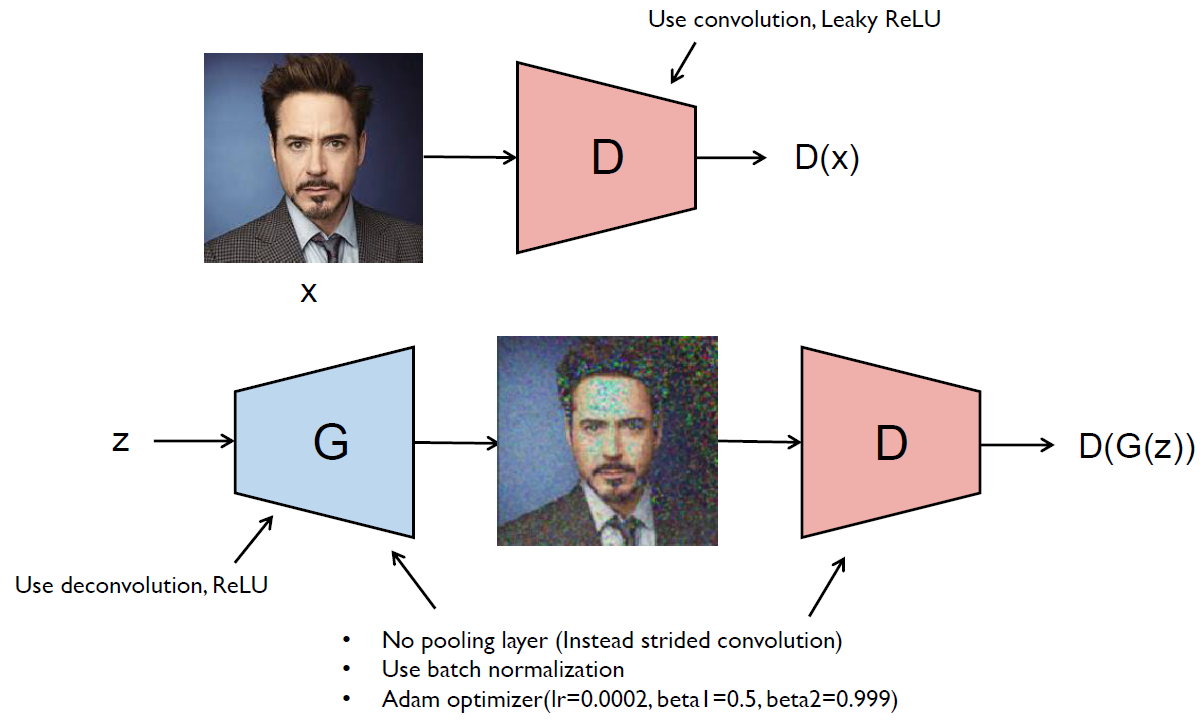
- Latent vector arithmetic
- They showed consistent and stable generations that semantically obeyed the linear arithmetic including object manipulation and face pose.

Least Squares GAN (LSGAN), 2016
- LSGAN adopt the least squares loss function for the discriminator instead of cross entropy loss function of GAN.
- Since, cross entropy loss function may lead to the vanishing gradient problem.
- LSGANs are able to generate higher quality images than regular GANs.
- LSGANs performs more stable during the learning process.
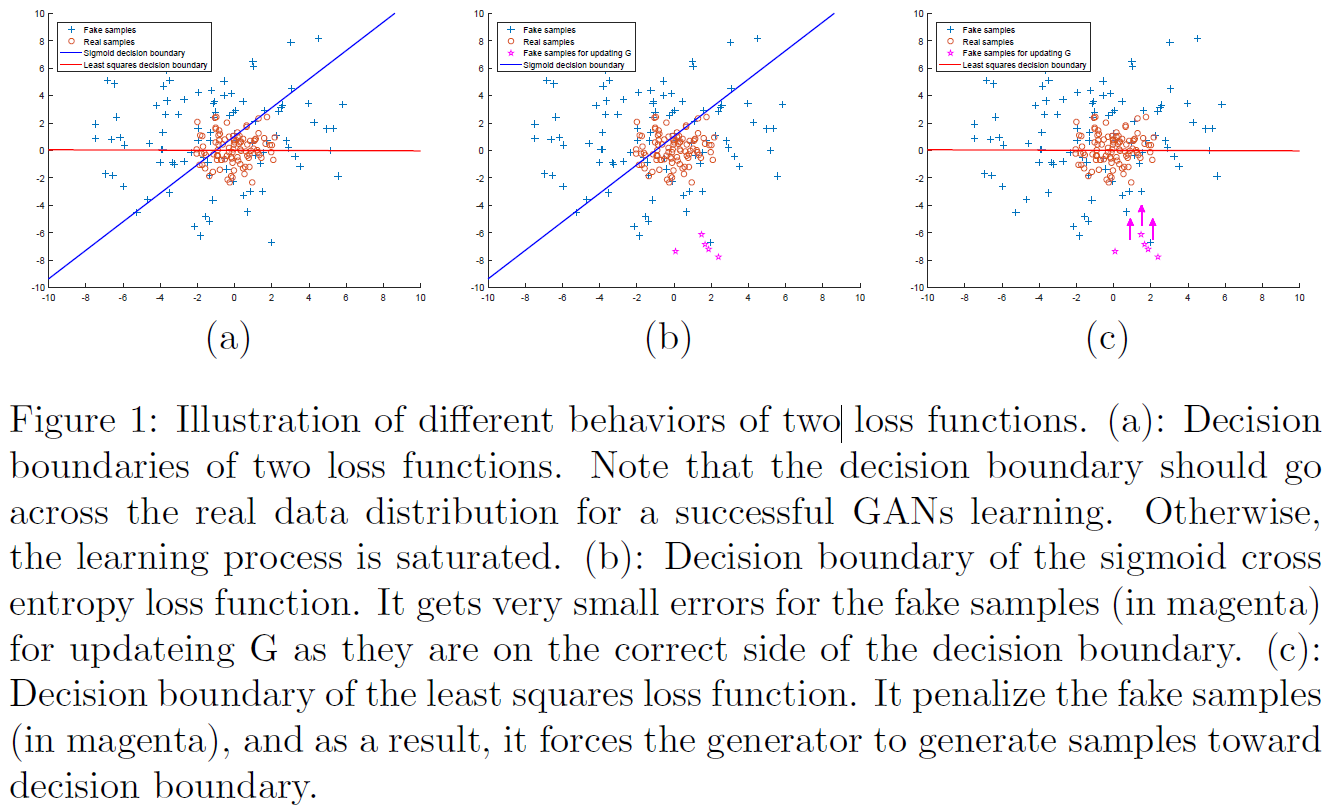
Semi-Supervised GAN (SGAN), 2016
- SGAN extend GANs that allows them to learn a generative model and a classifier simultaneously.
- SGAN improves classification performance on restricted data sets over a baseline classifier with no generative component.
- SGAN can significantly improve the quality of the generated samples and reduce training times for the generator.

Auxiliary Classifier GAN (ACGAN), 2016
- ACGAN is added more structure to the GAN latent space along with a specialized cost function results in higher quality samples.

Extensions of GAN
CycleGAN: Unpaired Image-to-Image Translation
- CycleGAN presents a GAN model that transfer an image from a source domain A to a target domain B in the absence of paired examples.
- The generator \(G_{AB}\) should generates a horse from the zebra to deceive the discriminator \(D_B\).
- \(G_{BA}\) generates a reconstructed image of domain A which makes the shape to be maintained when \(G_{AB}\) generates a horse image from the zebra.
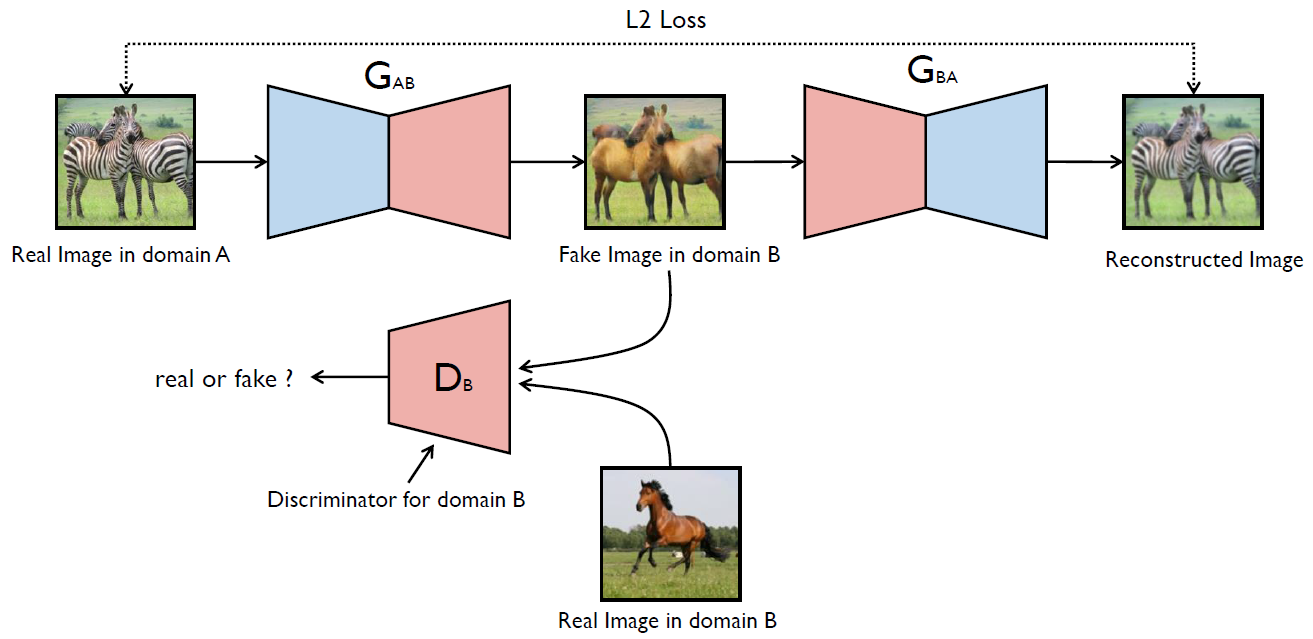
- Result

StackGAN: Text to Photo-realistic Image Synthesis
- StackGAN generate \(256 \times 256\) photo-realistic images conditioned on text descriptions.
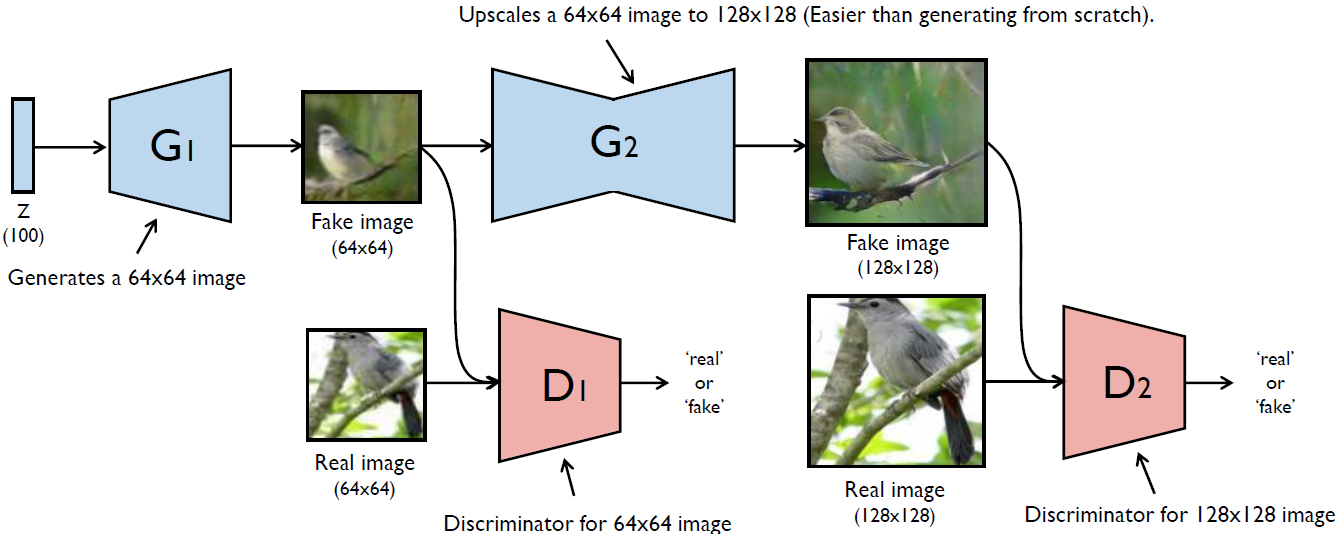
- Result
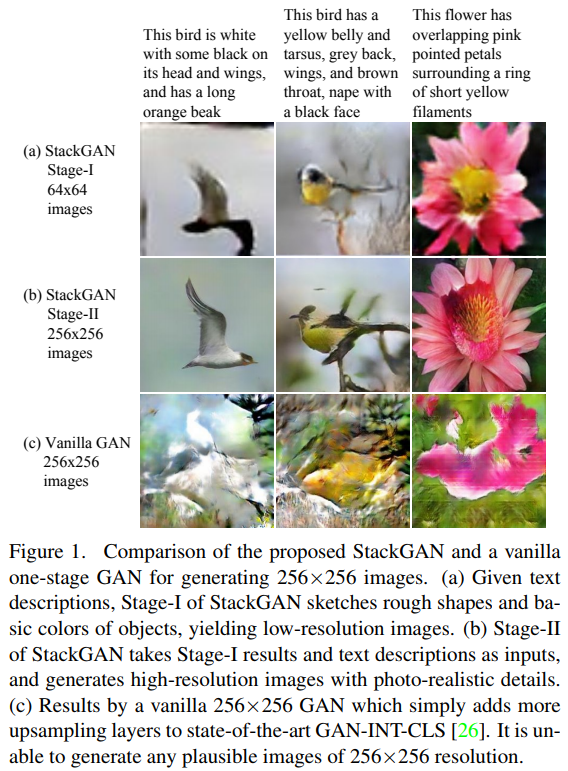
Latest work
- Visual Attribute Transfer
- Jing Liao et al. Visual Attribute Transfer through Deep Image Analogy, 2017

- User-Interactive Image Colorization
- Richard Zhang et al. Real-Time User-Guided Image Colorization with Learned Deep Prioirs, 2017
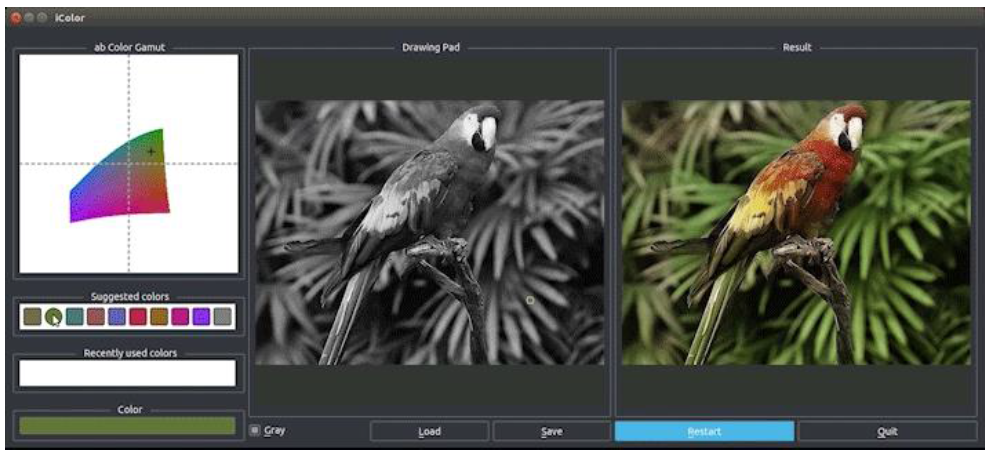
References
- Paper: Generative Adversarial Nets [Link]
- Paper: Unsupervised representation learning with deep convolutional generative adversarial networks [Link]
- Paper: Least Squares Generative Adversarial Networks [Link]
- Paper: Semi-Supervised Learning with Generative Adversarial Networks [Link]
- Paper: Conditional Image Synthesis With Auxiliary Classifier GANs [Link]
- Paper: Unpaired Image-to-Image Translation using Cycle-Consistent Adversarial Networks [Link]
- Paper: StackGAN: Text to Photo-realistic Image Synthesis with Stacked Generative Adversarial Networks [Link]
- PPT: Generative Adversarial Nets by Yunjey Choi [Link]



